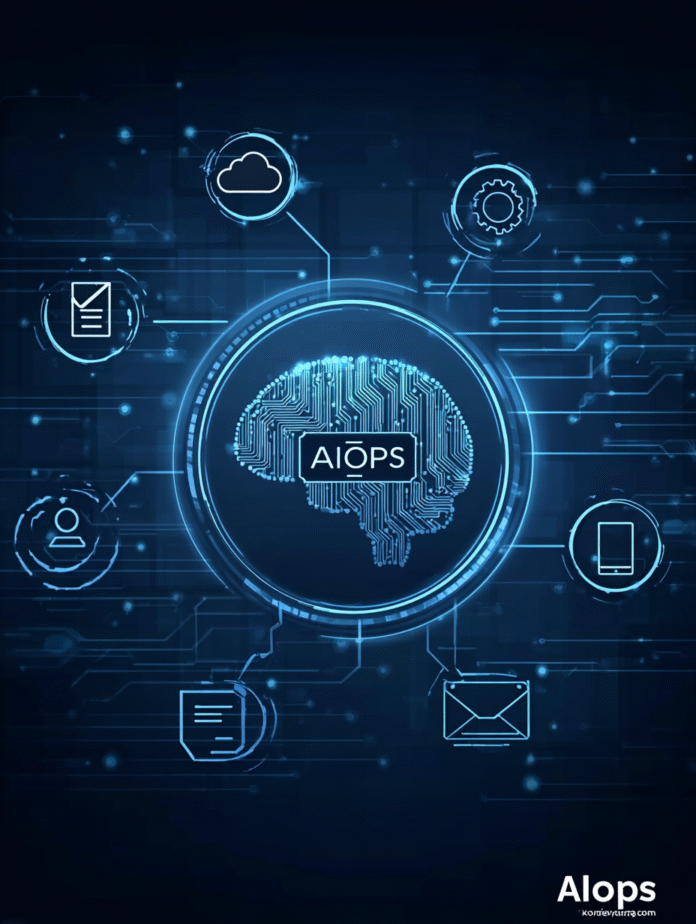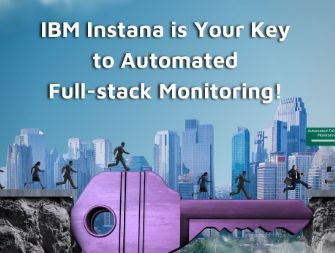Dateline: 2025 – Austin, TX
IT operations have always been a bit like juggling chainsaws—blindfolded—during an earthquake. Then came AIOps (Artificial Intelligence for IT Operations), promising to not only keep the chainsaws aloft but also tell you why they’re spinning out of control. In 2025, AIOps isn’t just a nice-to-have—it’s the secret weapon keeping modern enterprises from drowning in their own data.
The Problem AIOps Solves
Today’s IT environments generate mind-boggling amounts of data from applications, networks, and infrastructure. Traditional monitoring tools are like lifeguards with binoculars—they see the problem eventually, but not before the shark shows up.
AIOps flips the script by applying machine learning, analytics, and automation to sift through millions of events in real time, detect anomalies, and even recommend fixes. The result: fewer 3 a.m. “all hands” incidents and a lot more proactive problem prevention.
Gartner predicts that by 2027, 80% of large enterprises will use AIOps to drive automated remediation, up from 20% in 2022 (Gartner, 2024).
How It Actually Works
AIOps platforms ingest data from every corner of your IT ecosystem—logs, metrics, traces, and alerts—and run it through AI models trained to detect patterns humans would miss.
Key capabilities include:
-
Noise Reduction: Filtering out false positives so teams can focus on real problems.
-
Root Cause Analysis: Identifying not just what broke, but why.
-
Predictive Alerts: Anticipating failures before they hit users.
-
Automated Remediation: Triggering scripts or workflows to fix issues without manual intervention.
In essence, AIOps is like hiring an army of tireless junior engineers—without the break room drama.
Real-World Impact
-
E-commerce giants use AIOps to prevent cart abandonment during seasonal traffic spikes by predicting server strain and adjusting resources in real time.
-
Banks rely on it to maintain near-zero downtime for online transactions, detecting latency before customers notice.
-
Telecom providers leverage AIOps to cut mean time to resolution (MTTR) by as much as 50% (Forrester, 2025).
Challenges on the Road to Adoption
Despite the hype, AIOps isn’t a magic wand. Its success depends on:
-
Quality Data: Garbage in, garbage out.
-
Integration: AIOps needs access to all relevant data streams—siloed systems kill effectiveness.
-
Cultural Buy-In: Operations teams must trust the AI’s insights and act on them.
Without these, AIOps can devolve into just another dashboard gathering dust.
The Future of AIOps
AIOps is moving beyond infrastructure and application monitoring into business process observability—tying operational health directly to customer experience and revenue. Combined with generative AI, tomorrow’s platforms will offer more conversational interfaces (“Hey AIOps, why is the Frankfurt data center underperforming?”) and faster, more context-aware recommendations.
In a world where downtime equals lost revenue, AIOps isn’t just a trend—it’s the operational backbone of the digital enterprise.
Closing Thought
Think of AIOps as the difference between reacting to a fire alarm and having an AI fire marshal quietly put out the blaze before anyone smells smoke. In IT, prevention really is the best cure—and AIOps is making that possible.
References
-
Gartner. (2024). Predicts 2024: AIOps and the Future of IT Operations. Retrieved from https://www.gartner.com
-
Forrester. (2025). The Total Economic Impact™ of AIOps Platforms. Retrieved from https://www.forrester.com
-
IBM. (2025). AIOps: Intelligent Automation for IT. Retrieved from https://www.ibm.com/cloud/aiops
Samantha Cohen – Co-Editor
Dallas, Texas
Peter Jonathan Wilcheck – Co-Editor
Miami, Florida
Post Disclaimer
The information provided in our posts or blogs are for educational and informative purposes only. We do not guarantee the accuracy, completeness or suitability of the information. We do not provide financial or investment advice. Readers should always seek professional advice before making any financial or investment decisions based on the information provided in our content. We will not be held responsible for any losses, damages or consequences that may arise from relying on the information provided in our content.



